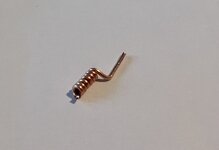MadAsAHatter
Well-known member
I’m getting ready to start sourcing components for my Hilbish GT120 (Matamp GT120 Clone) build. This is the first build where I’m sourcing all the parts instead of buying as a kit. I have the BoM so I know what I need as far as values of everything goes. I can also read color codes and whatnot. What I need help with is the appropriate type of capacitors, resistors, diodes, etc.
Outside of the BoM saying do not use ceramic capacitors, there’s no other specifications on which types of components. I’ve been reading everything I can on the subject. I understand the general idea that different composition of materials will have their advantages/disadvantages, but I don’t know which ones are more appropriate for tube amps. For instance CC vs metal oxide resistors. Is one “better” than another? Can any be used and it’s more about tolerances and price? Same questions about capacitors, diodes, etc. Which ones to use. I hear/see talk about mustard caps and orange drop caps. Is this a branding thing or just a reference to their color and shape?
While on this subject, what about wire? I see there’s a couple of different options here as well. Is there any preferred type of wire to use? I’m not going for vintage accuracy or anything. I just want to make sure I’m getting the appropriate type so it doesn’t burn out under working voltages.
Outside of the BoM saying do not use ceramic capacitors, there’s no other specifications on which types of components. I’ve been reading everything I can on the subject. I understand the general idea that different composition of materials will have their advantages/disadvantages, but I don’t know which ones are more appropriate for tube amps. For instance CC vs metal oxide resistors. Is one “better” than another? Can any be used and it’s more about tolerances and price? Same questions about capacitors, diodes, etc. Which ones to use. I hear/see talk about mustard caps and orange drop caps. Is this a branding thing or just a reference to their color and shape?
While on this subject, what about wire? I see there’s a couple of different options here as well. Is there any preferred type of wire to use? I’m not going for vintage accuracy or anything. I just want to make sure I’m getting the appropriate type so it doesn’t burn out under working voltages.

